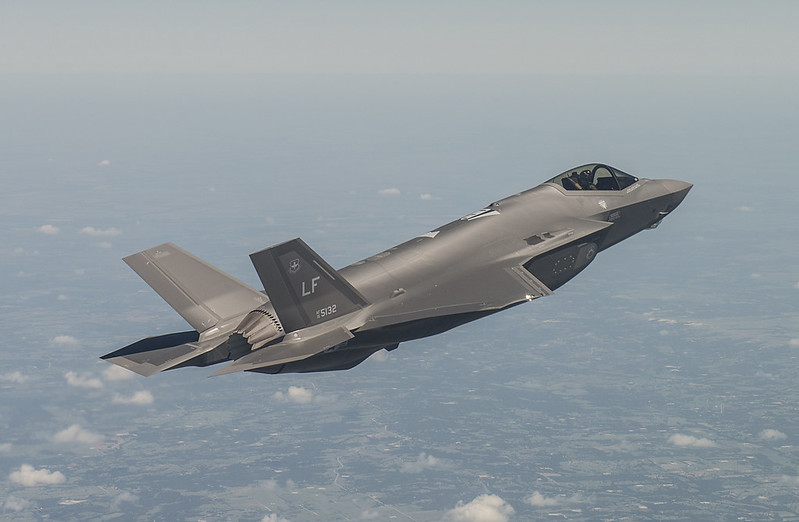F-35 : Introduction and Basics
<< Val Baganza,Italy, AUG-9-2024 >> F-35 : Introduction and Basics This article begins an in-depth series exploring the F-35 Lightning II fighter jet, a program that stands as both the most expensive and one of the most controversial in history. Despite its detractors, TDM contends that many criticisms of the F-35 are either misinformed, politically motivated, or deliberately misleading. Critiques of the F-35 often fail to account for its unique capabilities and the significant cost efficiencies it delivers by replacing multiple legacy aircraft. Comparing the F-35's cost and performance metrics to 4th-generation aircraft is akin to comparing apples to oranges. The program’s consolidation of roles previously filled by several platforms offers substantial long-term savings. At TDM, we believe the F-35 is a transformational system that will ensure air superiority for the United States and its allies for at least the next two decades. This series will systematically examine the program from various perspectives, providing a thorough analysis of its origins, design, capabilities, and operational implications. Roadmap for the Series This series will cover the following topics (not necessarily in order): The Origins of the F-35 Program. Program Requirements and System Design & Development (SDD). The X-35 vs. the X-32: The Design Competition. Airframe Design and Stealth Capabilities. Propulsion System and the Single-Source Engine Controversy. Avionics System Overview: Basic Architecture. Design and capabilities. Intelligence, Surveillance, and Reconnaissance (ISR). Information Networking. TR3/Block IV Upgrades. Weapons and Ordinance Systems. Industrial Complex and Global Supply Chain. Joint Operations and Allied Interoperability. Maintenance and the ALIS System. Cost Per Flight Hour Analysis. The F-35 XL: The Fourth Variant. With this road map in mind, let us begin with the basics of the aircraft itself. Overview of the F-35 Lightning II The F-35 Lightning II is a family of advanced, stealthy, single-seat, single-engine multi role fighters developed by Lockheed Martin. It is available in three variants, each designed to meet the unique operational requirements of the U.S. military services and allied forces. Below, we provide a detailed breakdown of these variants and their performance characteristics. 1. F-35A: Conventional Takeoff and Landing (CTOL) Role: Standard operations from conventional runways. Users: Primarily air forces, including the U.S. Air Force and allied nations. Performance Characteristics: Max Speed: Mach 1.6 (~1,200 mph / 1,931 km/h). Combat Radius: ~590 nautical miles (1,093 km). Ferry Range: ~1,500 nautical miles (2,800 km) with external tanks. Payload: ~18,000 lbs (8,160 kg), with 4,500 lbs internal. Engine: Pratt & Whitney F135-PW-100. Operational Ceiling: 50,000 feet (15,240 meters). Unique Features: Internal gun. Flying Boom aerial refueling system. 2. F-35B: Short Takeoff and Vertical Landing (STOVL) Role: Designed for operations on short airstrips or amphibious assault ships. Users: U.S. Marine Corps, Royal Navy, and others. Performance Characteristics: Max Speed: Mach 1.6 (~1,200 mph / 1,931 km/h). Combat Radius: ~505 nautical miles (937 km). Ferry Range: ~900 nautical miles (1,667 km). Payload: ~15,000 lbs (6,800 kg). Engine: Pratt & Whitney F135-PW-600 with Rolls-Royce Lift System. Unique Features: Lift Fan system for vertical operations. Internal gun. Probe & Drogue aerial refueling system. 3. F-35C: Carrier-Based (CATOBAR) - Catapult Assisted Take Off-Arrested Landing Role: Optimized for aircraft carrier operations. Users: U.S. Navy, U.S. Marine Corps. Performance Characteristics: Max Speed: Mach 1.6 (~1,200 mph / 1,931 km/h). Combat Radius: ~615 nautical miles (1,139 km). Ferry Range: ~1,200 nautical miles (2,220 km). Payload: ~18,000 lbs (8,160 kg). Engine: Pratt & Whitney F135-PW-100. Unique Features: Foldable wingtips and reinforced structure for carrier landings. Arrester gear hook. No internal gun, space used for extra fuel. Probe & Drogue aerial refueling system. Shared Features Across All Variants Stealth Technology: Designed for low observability. Engine: Pratt & Whitney F135-PW-100. Advanced Sensors: Includes Active Electronically Scanned (AESA) radar, Distributed Aperture System (DAS) , and the Electro Optical Targeting System (EOTS). The AESA radar system may have electronic attack capability. Integrated Avionics: Fuses data for unmatched situational awareness. Weapons Compatibility: Wide range of air-to-air, air-to-ground, and anti-ship weapons. Multirole Capability: Effective in air superiority, ground attack, electronic warfare, and ISR roles. Challenges in F-35 Development While we believe the F-35 program has delivered impressive results, the development of the F-35B STOVL variant introduced compromises that affected the design and production of the other two variants. For example, the shorter bomb bay of the F-35B limits its capacity to carry larger JDAM weapons or the B61-12 nuclear bomb. This design constraint has sparked debates about the program's trade-offs and long-term impact. In addition, building an aircraft with so many stakeholders (Services,Companies,Countries) always creates conflicts in requirements and work share. The fact this aircraft made it to volume production is a great achievement. Here at TDM, we believe that most valid remaining criticism of the F-35 is the cost per flight hour. This MUST be a priority effort. The subsequent articles in this series will explore these challenges and demonstrate why, despite these compromises, the F-35 remains a groundbreaking platform. So let the journey begin ! On to the next article which is on the origins of The F-35. References Barret & Carpenter. Survivability in the Digital Age : The Imperative for Stealth, The Mitchell Institute for Aerospace Studies, Air Force Association, July 2017 Burbage,Clark, & Pitman. F-35 The inside story of the Lightning II. SkyHorse Publishing, 2023.

